Our trip from Sodwana to St lucia took us via Hluhluwe, where we made a quick stop to do some shopping. As we packed everything away in the truck and were preparing to get on the road again we saw an iconic ‘mielie lady’ walking past our truck. Anyone in South Africa knows the Madam and Eve cartoons, where the ‘mielie lady’ drives old grandma nuts.
We went for lunch at the Ilala Weavers and bought ourselves a little souvenir – a basket to put all our computer and battery cables in.

We tried our luck collecting a parcel in Mtubatuba Postnet even though we hadn’t gotten the sms yet. Unfortunately, luck wasn’t on our side. The lady at the counter said that the tracking showed it would be there the following day…. after lunch. We drove the 20km further to St Lucia, got a bite to eat and parked and slept in the street. The following day we did some shopping and drove back to Mtubatuba. Although we had to wait a few hours, in the end we got our package, sorted a few things out and drove back to St Lucia.
Just outside St Lucia, you enter the St Lucia Wetlands reserve, part of the iSimangaliso Unesco World Heritage Site, and about 30km inside the reserve is the Cape Vidal camp site and boat launch. We booked in for a few nights hoping there would be some snorkeling time, family chat time and work time.
Although the receptionist said that there was cellphone reception, it turned out not to be. Be it temporarily due to the weather or due to load shedding, we don’t know. Unfortunately this implied: no family chat time, no website work and no research of any kind.
The weather was rainy and cloudy for three days, so snorkeling time also went out of the window. In between showers and stiff breezes we went for walks on the beach, to meet up again with our friends of the crabby kind, although they didn’t seem to be present in the same numbers as on the Sodwana beach though. Just like on other beaches in this part of the country, we saw the fishermen braving the not so great weather in the hope of catching something. We took a long walk on the beach past various rocky outcrops and at one place it almost looked as if the ocean had had an upset tummy and just burped a load of random rocks haphazardly on the beach.
Various sections of the beach looked like abstract artwork where the waves had swirled and shaped the black and beige sand in intricate patterns and natural brush strokes.
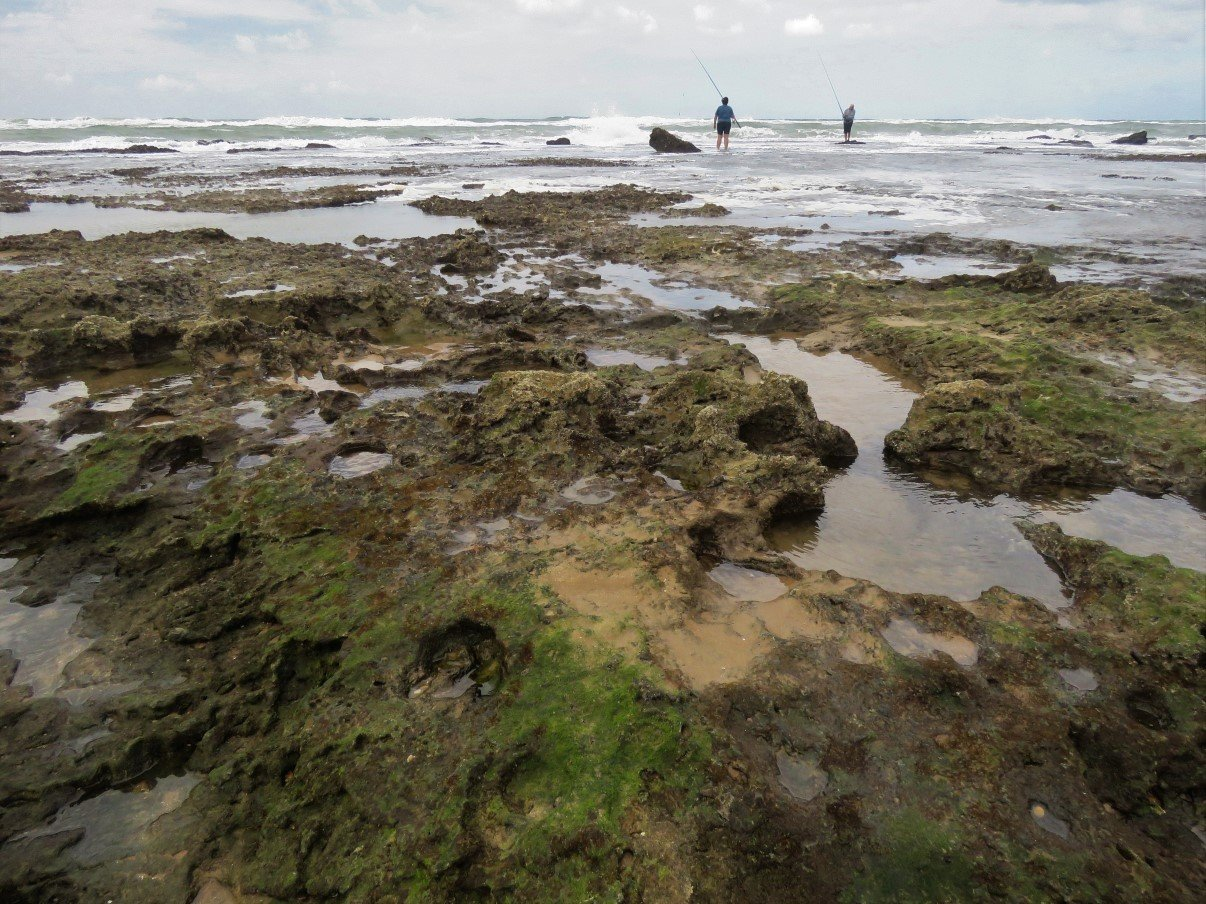
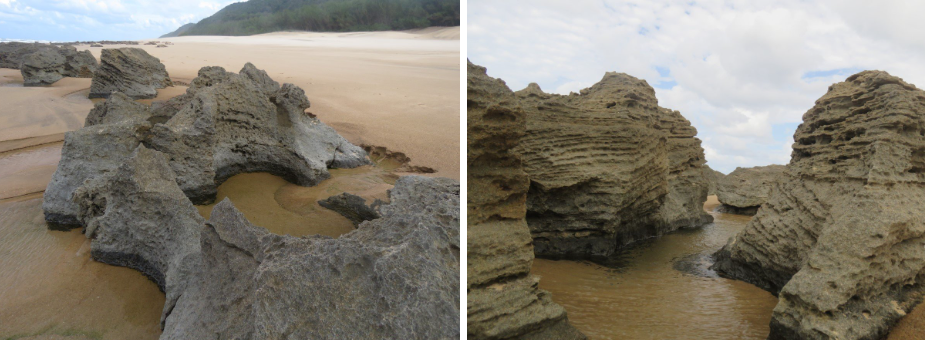
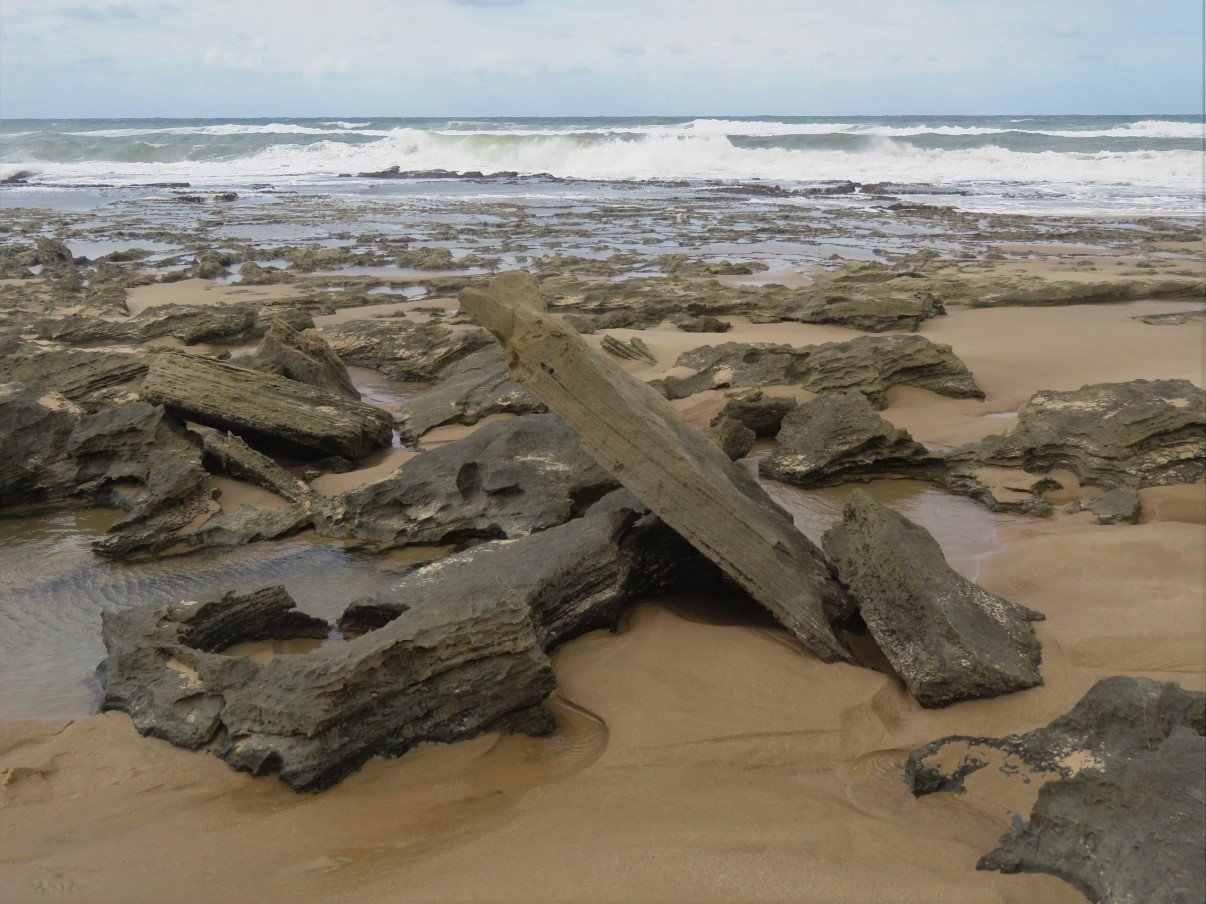
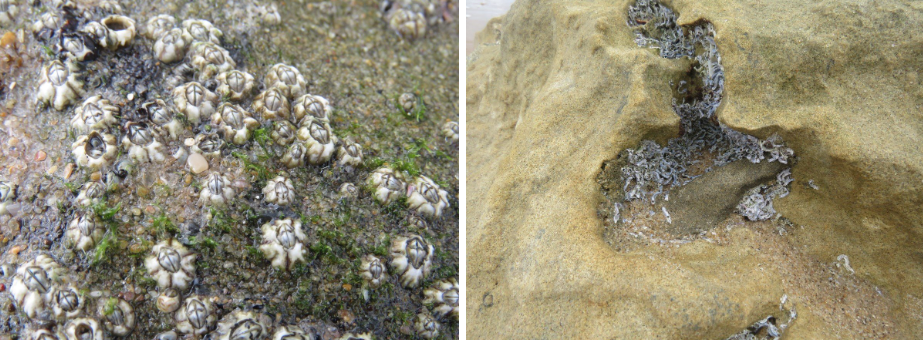
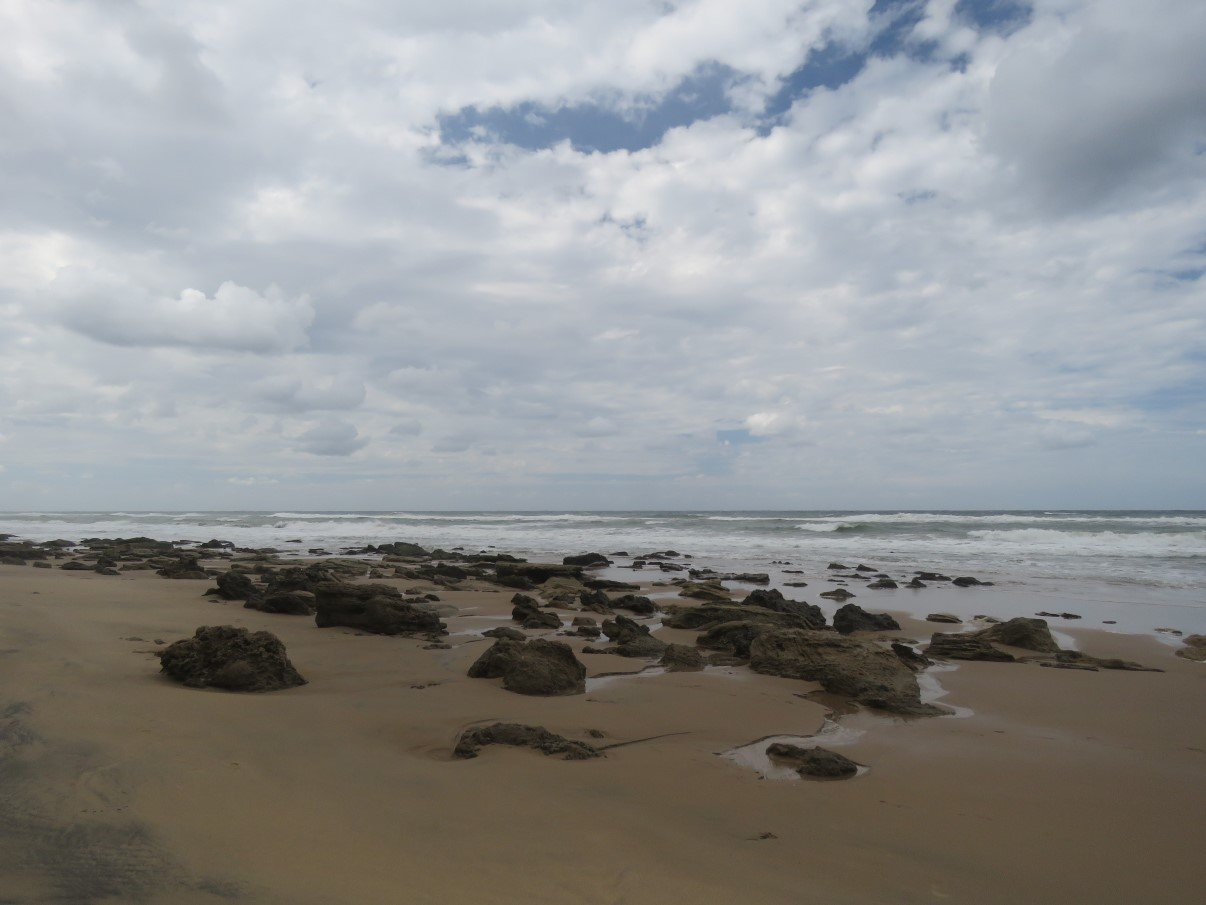
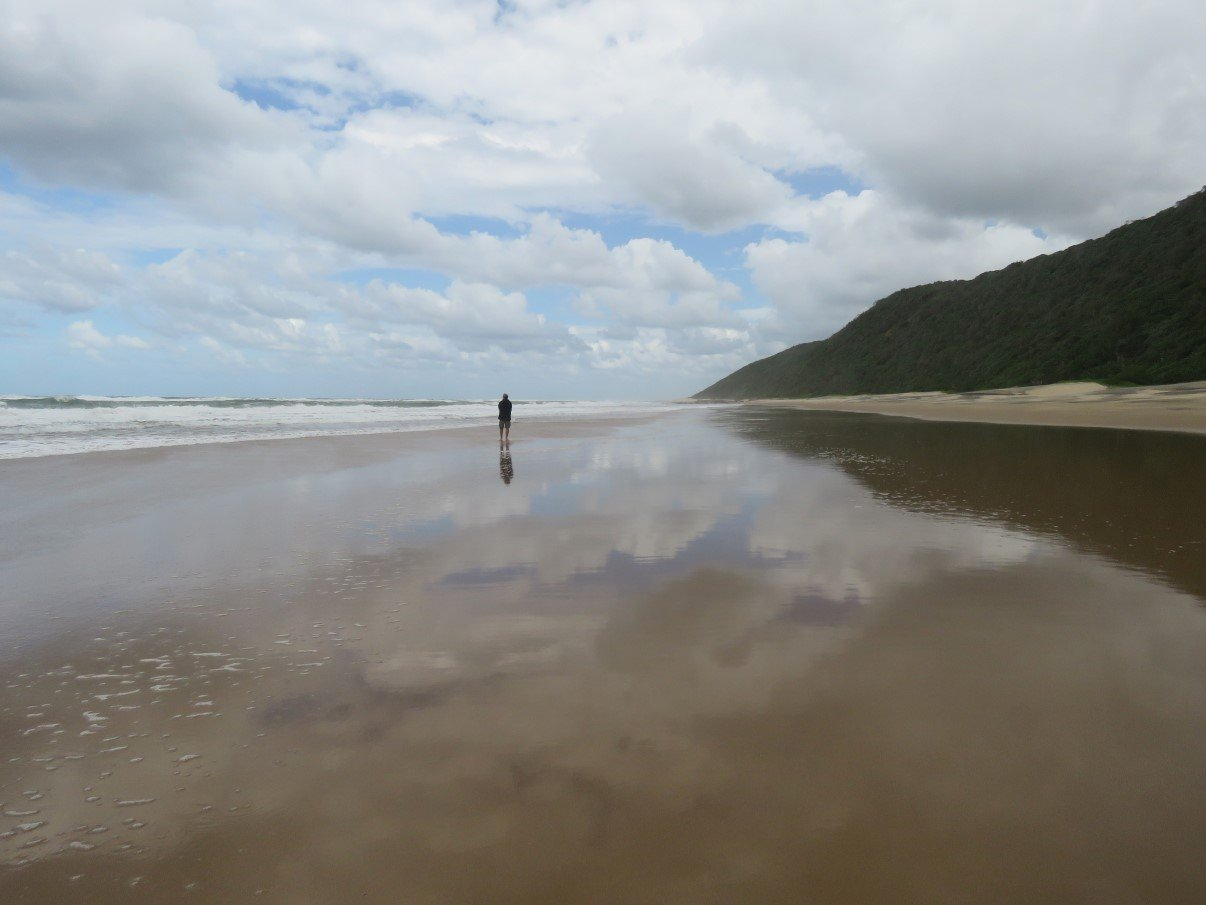
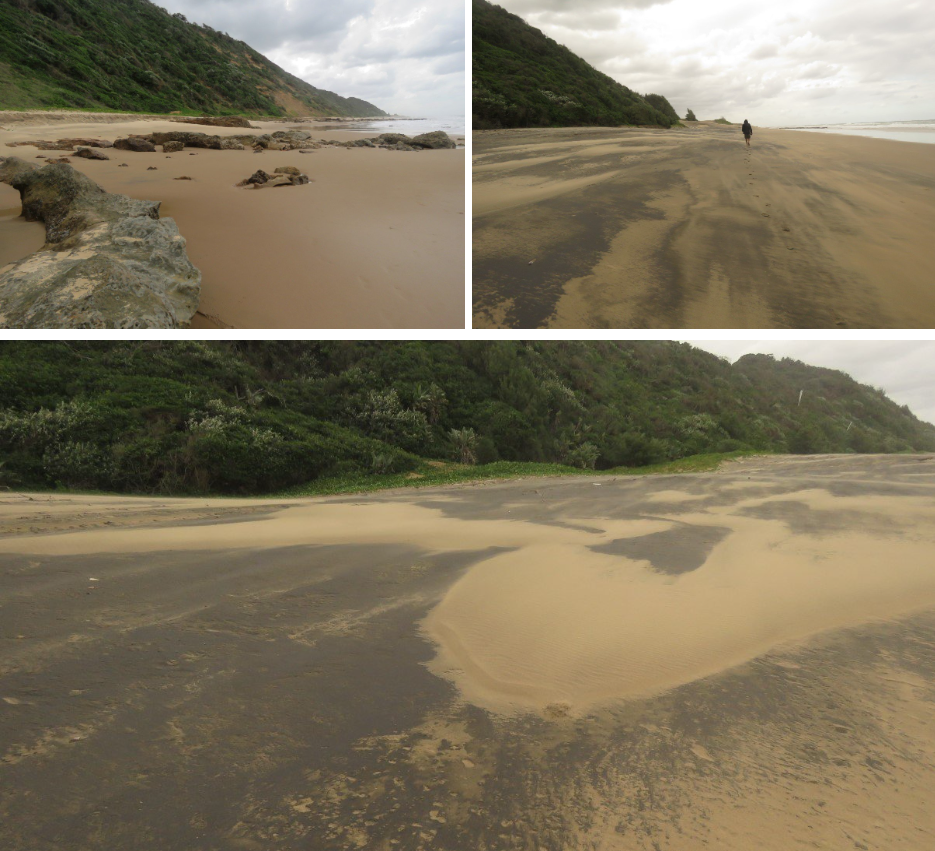
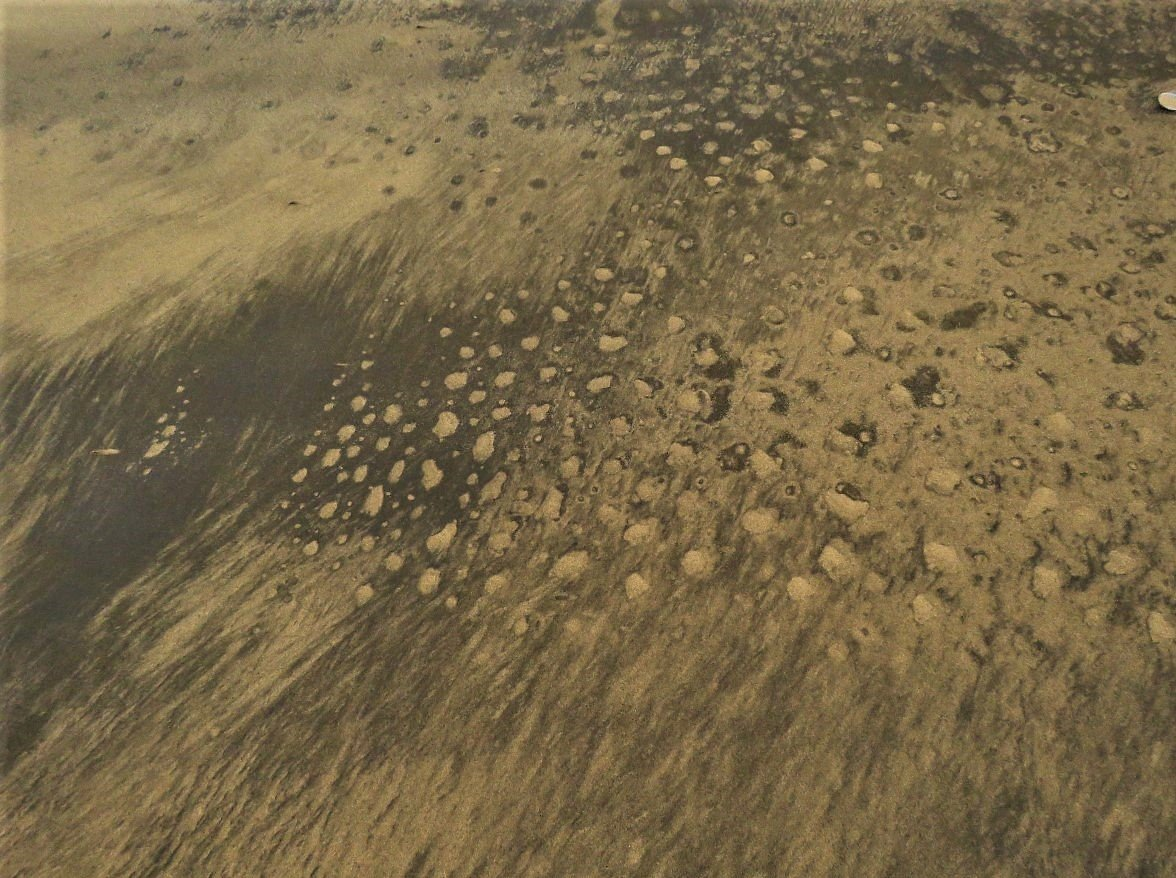
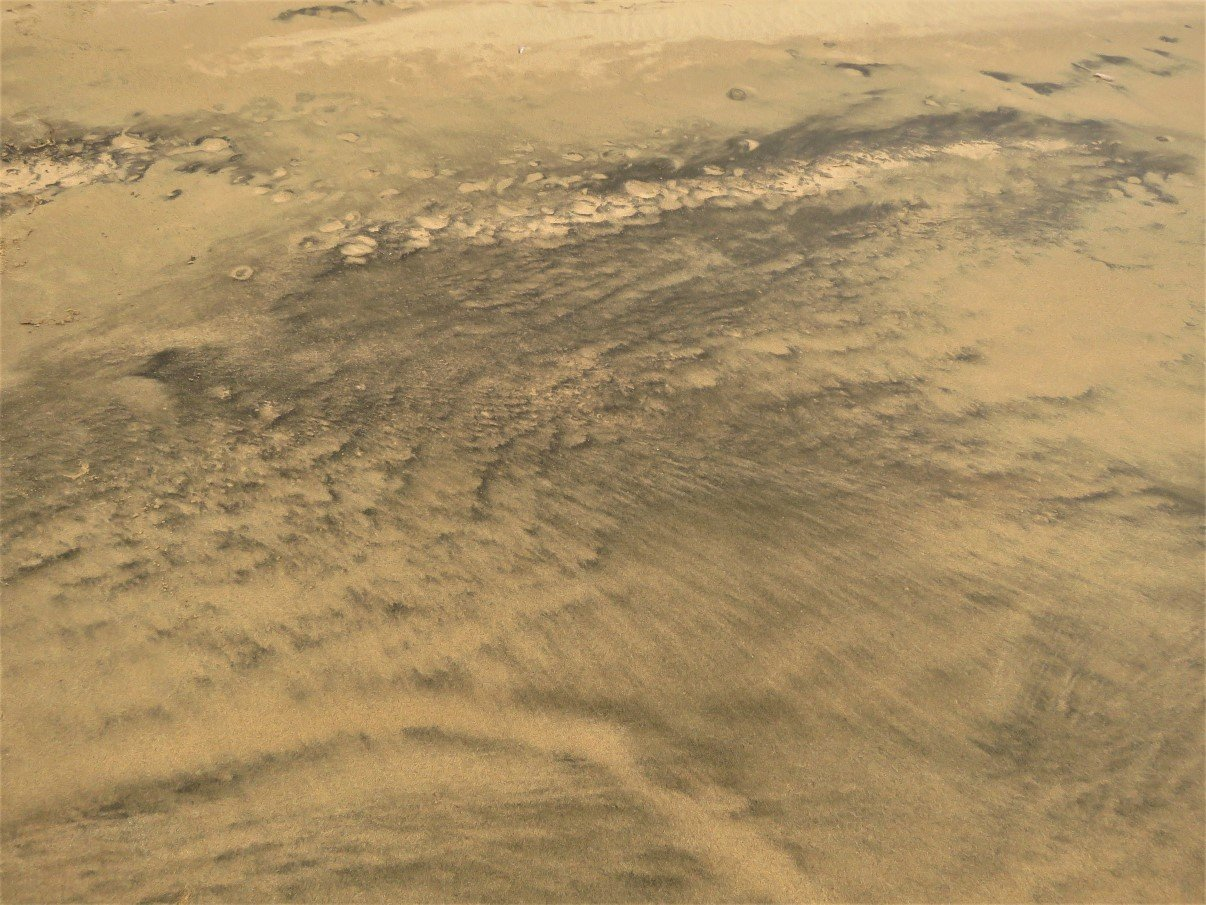
Seeing the weather wasn’t great, we spent more time in Trokkie for DIY and TLC: cleaning and sorting the cabin, washing windows, etc. The one morning proved to be a cleaning session with entertainment. As I got up in the morning, Stefaan warned that the monkeys were very naughty and active and had already tried to steal our container with rusks from the table.
Although safety signs warn for bushpigs and hyena’s amongst possible visitors in camp at night, we hadn’t see any. We only saw buck and mongoose and of course the vervet and samango monkeys who, that morning while we were spring cleaning Trokkie, had a ball with the trashcans around the campsite. The monkeys eventually had a major fight in the trees above us and there was a lot of screeching and mock attacking going on. They are so brazen and smart that they know how to open zips of tents, locks on storage crates and generally create havoc around camp (or in trucks like we experienced in Sodwana). One of the other caravans seemed to be the choice-of-the-day because about 20 monkeys got busy prying open crates, pushing over trolleys and messing around the contents of the trash can. Chatting to regular campers on this and other camp sites, we heard that the monkeys are not only brazen but smart as well. They will generally not challenge a male, but won’t hesitate taking on a female. They know the difference. One couple was telling us that the monkeys get so aggressive that they will bare teeth and attack females going to the ablution block, grabbing their toiletry bag in the hope of finding food. It doesn’t help of course when you see other campers feeding the buck. Although we understand that the buck will never get to the aggression level of the monkeys, it sets a bad example.
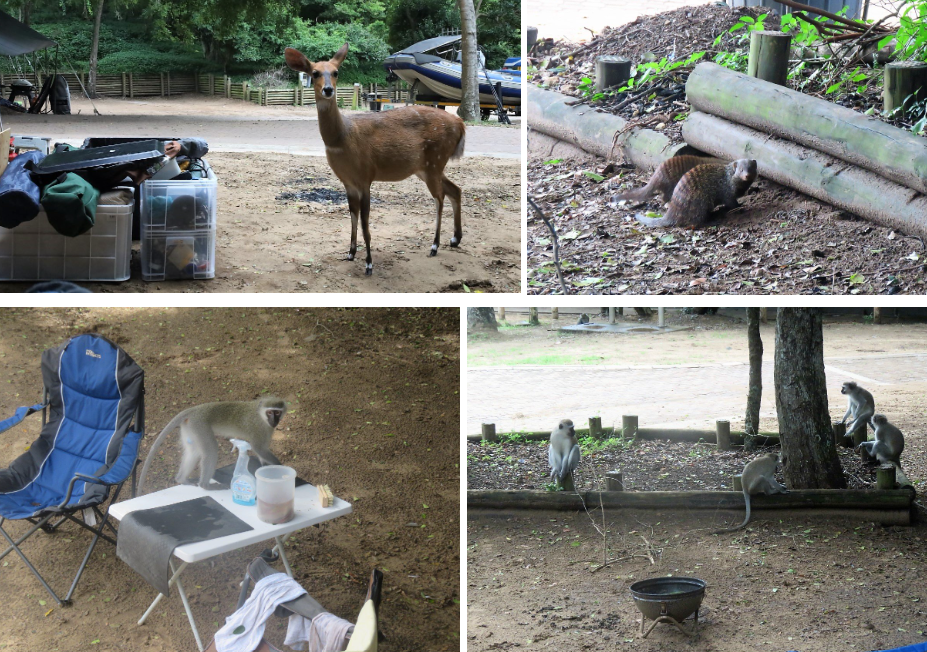

Only on our last day the weather cleared with blue skies most of the day. At low tide we went to the beach to see if Stefaan could get a snorkeling session in. He did, but wasn’t as happy as what he had been at Mabibi: too much sand swirling up and too many airbubbles of the surf breaking on the reef.
Later in the afternoon, we went for a last walk on the beach, met some fellow walkers and, back in camp, shared a glass of wine while we chatted about Namibia.
The following morning we left the camp and enjoyed a slow drive, stopping here and there to enjoy the views of the St Lucia wetlands and the reserve. Exiting the camp, we were again reminded that we were in ‘wild’ country with some serious opposition. This is a warning not to be taken lightly, as we would figure out very soon.
We had a cup of coffee with the hippos lazing about at the edge of a waterhole.
When we saw, a bit further, a solitary hippo grazing and being reflected in a puddle with waterlilies, I asked Stefaan to stop as I thought it might make for a cool photo. Unfortunately the hippo didn’t like big white things that stop and got into fifth gear to run to the protection of the bush a few hundred meters away from the road. If we ever wondered how fast a hippo can run: now we knew! And we realised we would indeed never be able to outrun a hippo. We’re always amazed how: in the animal kingdom- vegetarian doesn’t necessarily equal slimness and weight control (hippo, elephant, buffalo, etc). But obviously their size has nothing to do with their speed and agility and we, as humans, would most probably lose out to all those vegetarians.
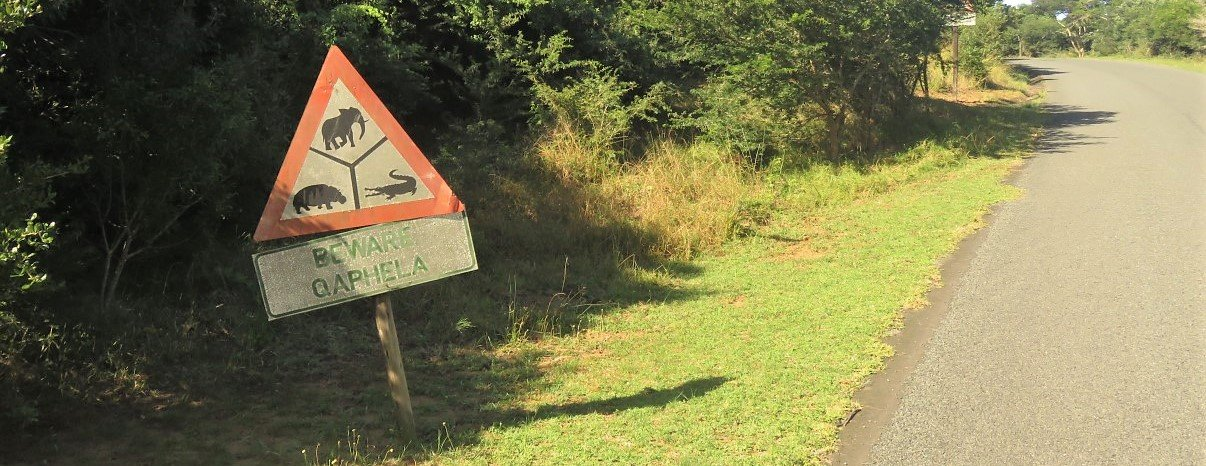
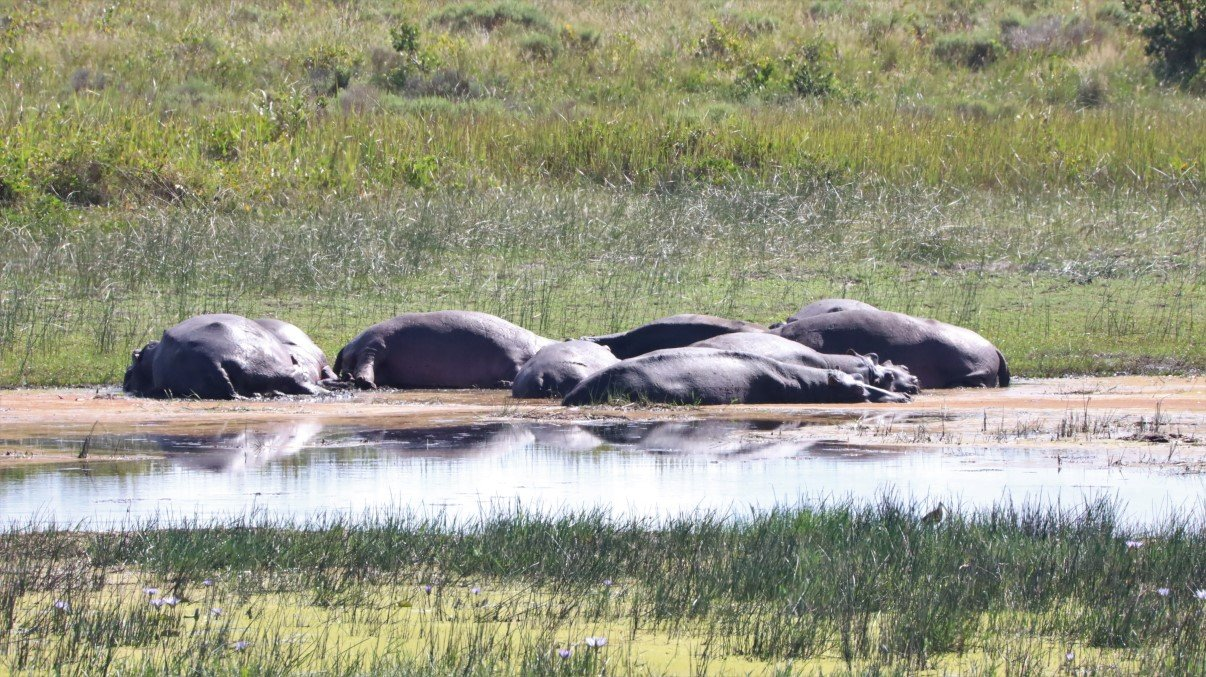
We had read something about ‘Red Dunes’ and had originally thought it was a tourist attraction somewhere on the beach at Cape Vidal. Standing at one of the lookout points however we saw a hill or dune with red sand (compared to the white and black beach sand) and presumed that might possibly be the Red Dunes. We made the comparison with the Little Red Desert near Port Edward at the mouth of the Mtamvuna River, which we had visited a few years ago.
Gazing out over the wetlands one is not only drawn to the far horizons, but also to the ongoing activity in the bush around you. One of my biggest frustrations so far has been the sheer impossibility of trying to capture butterflies with the camera. Luck was on my side that day and there were two butterflies, kind enough to pose for me long enough for the shutter to click.
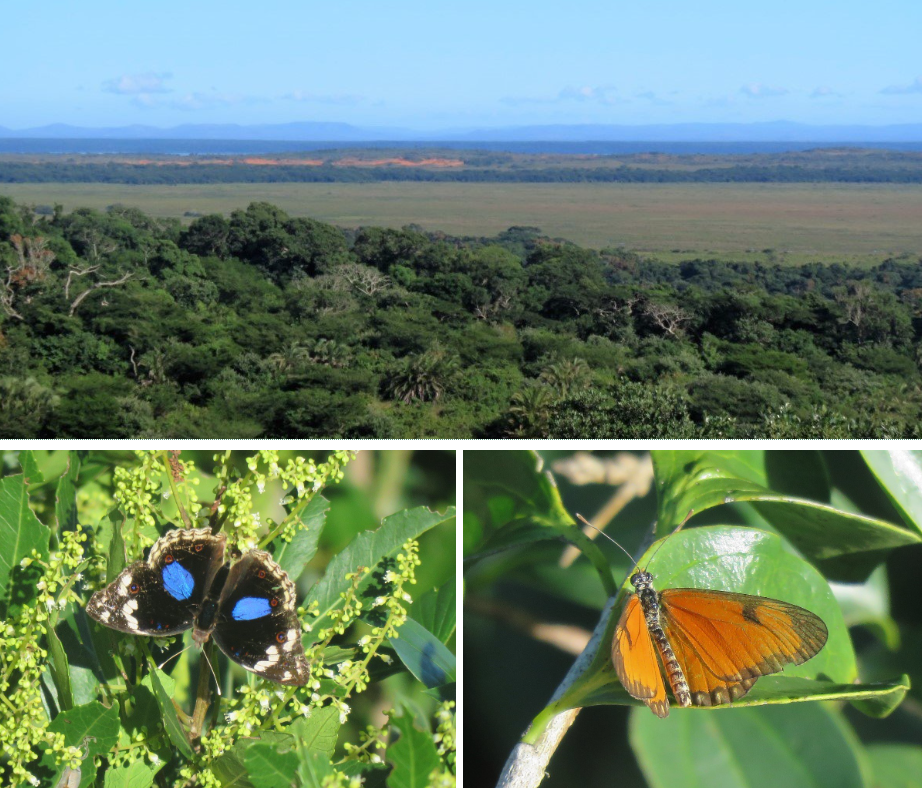
We saw a buffalo-crossing and shortly after we saw a herd of them grazing on the edge of a pond, surrounded by waterlilies.
Although we had been quite stunned to see waterlilies in the more bushy bushveld environment of Kruger Park a month ago, here in the estuary wetland it seemed more natural to see them… and they were numerous!
Be it as it may that the environment seemed more natural for the lilies, it was still quite incongruous to see the dominating bulk of the buffalo and the daintiness of waterlilies in one picture.
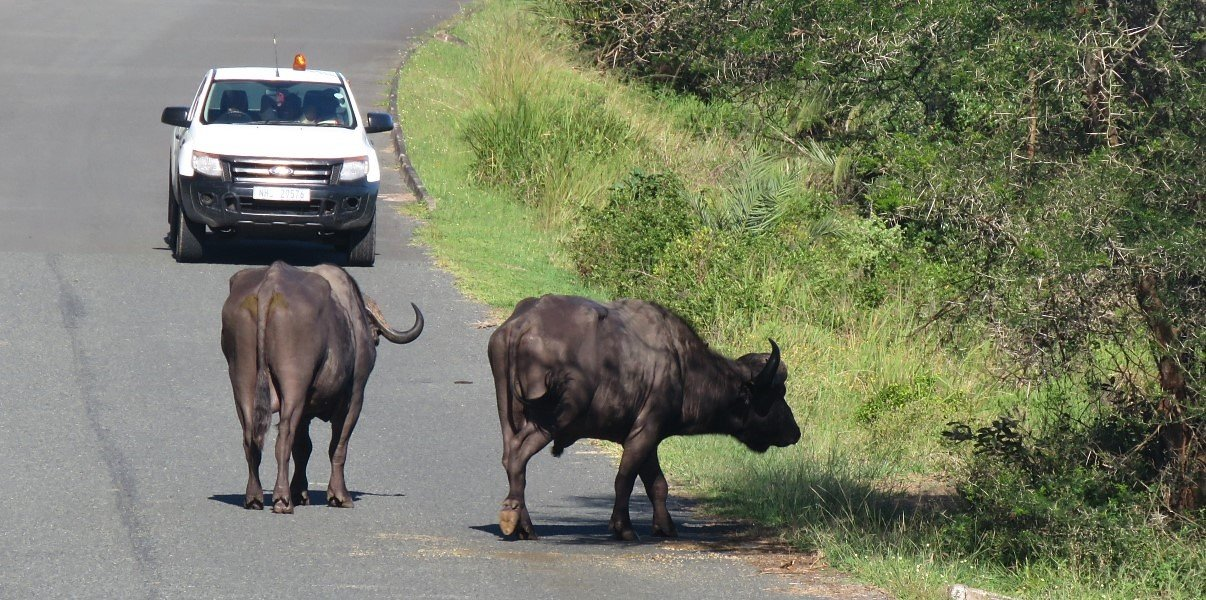
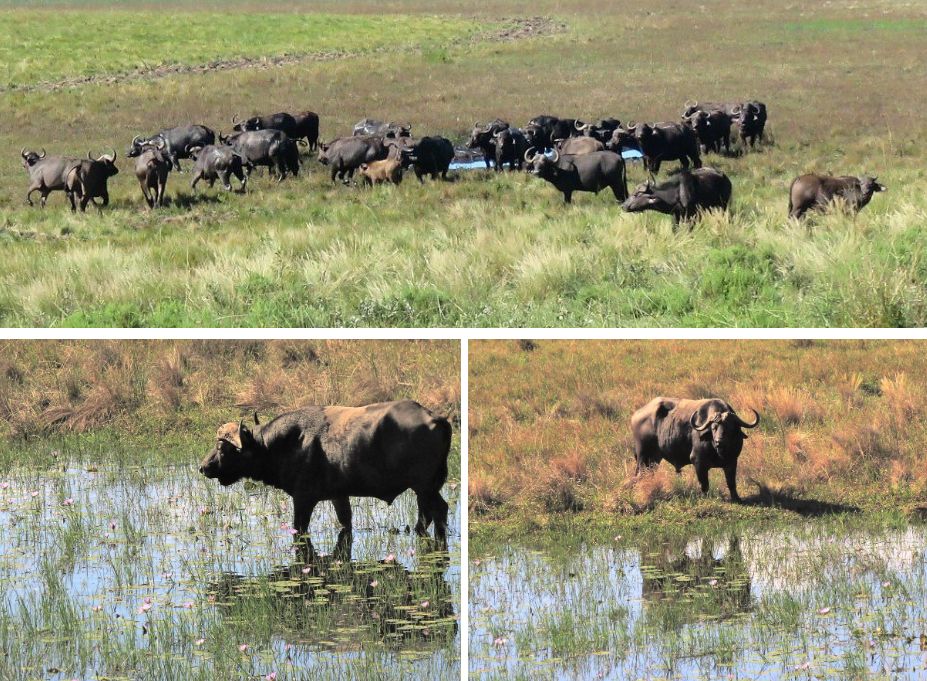
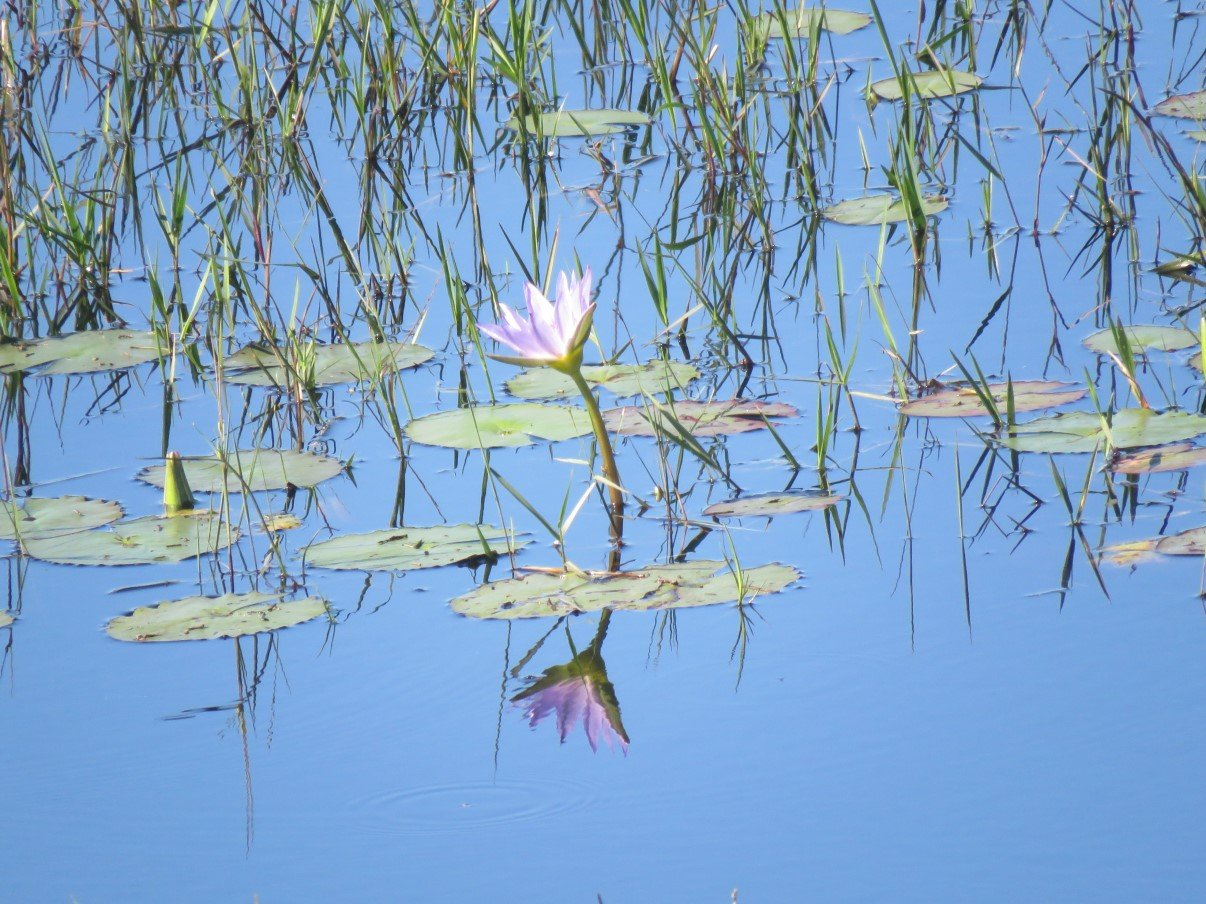
At Catalina Bay lookout point and Kumfazana Bird hide we had magnificent views over the lake.
We heard rustling in the bush around us and the occasional plop in the water down below and were aware of the sign that stood at the bottom end of the path.
We wondered if the wildlife also had been educated by the park rangers to stay on their side of the sign! And who had right of way if we would meet? I guess we wouldn’t not even consider challenging, but would be running like hell!
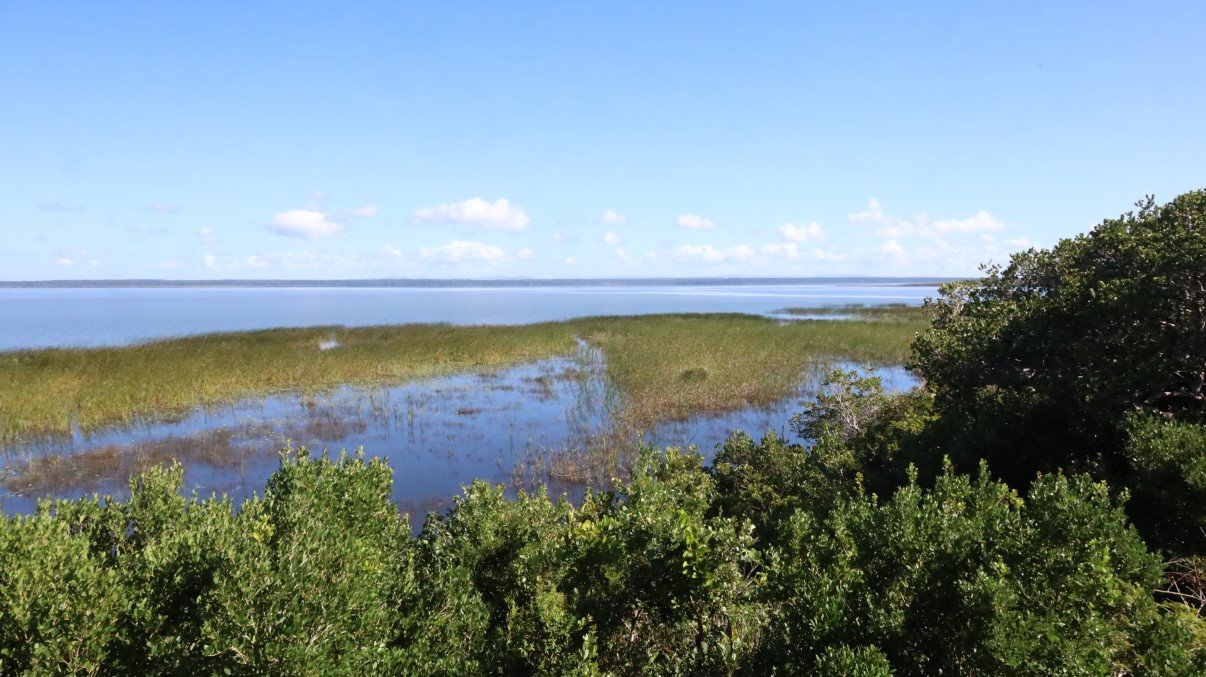
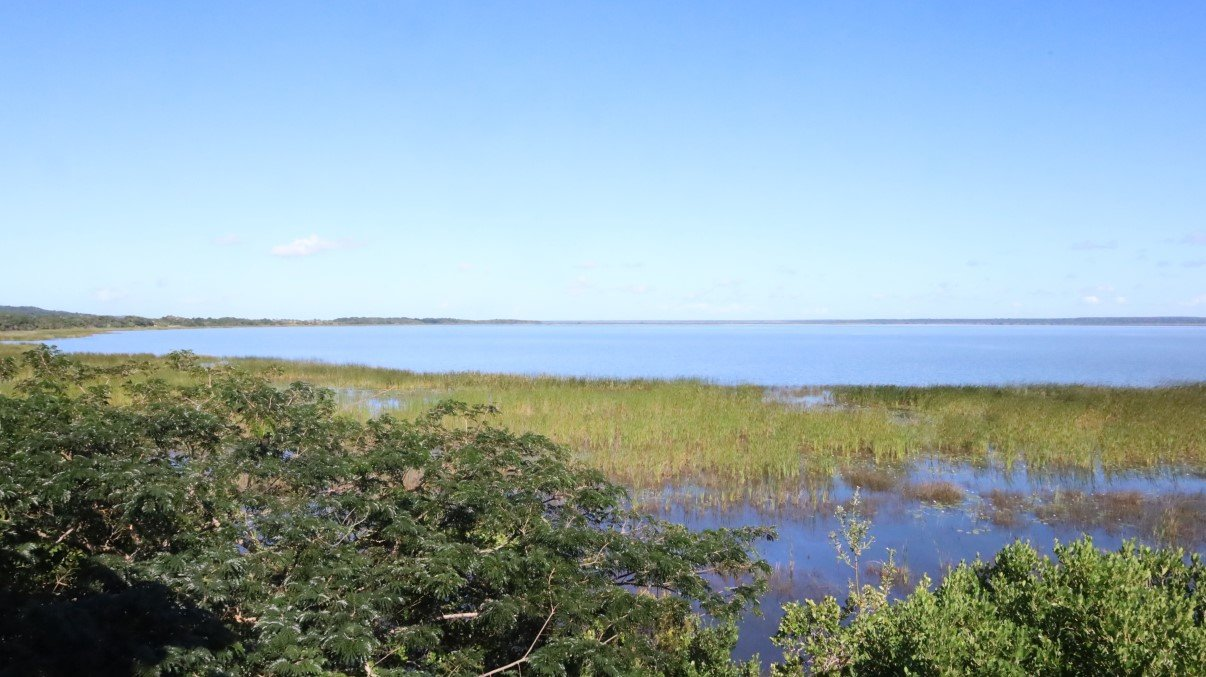
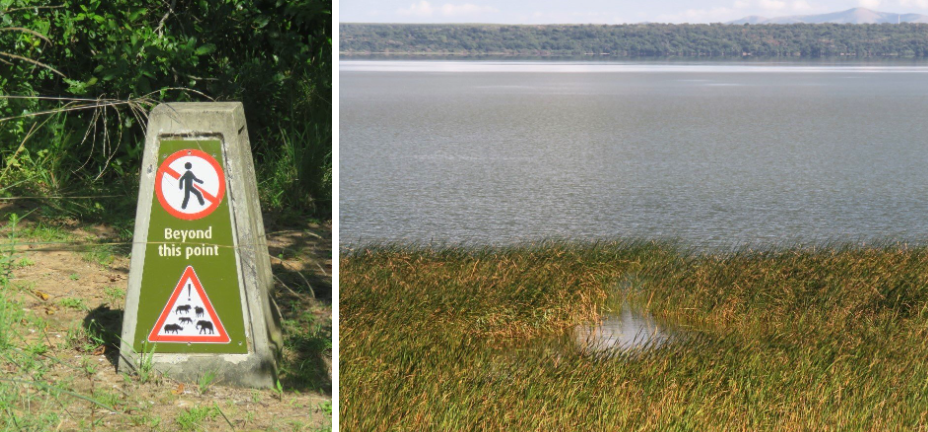
A bit further on the main path to the exit gate, we took a left turn towards Mission Rocks, not knowing what to expect. The sign had said: lookout point and beach. When we read lookout point we usually expect a spot where you have far away vistas of the landscape below and before you. And beach… seeing we had spent almost three weeks at various beaches along the north coast, we expected beach. This lookout point however was a short walk to the beach which was actually a rocky shore rather than a beach. The “rocks” part of the name was certainly appropriate. You had to be quite agile and sure of your footing because the rocky beach was… yes… rocky! It was pretty though. Lotsa rocks with the white foamy surf breaking and leaving hundreds of little pools with fish and crabs vying for the best spot: location, location, location! Interesting that the crabs were completely different from those we had seen on the other (sand) beaches. These were definitely bigger.
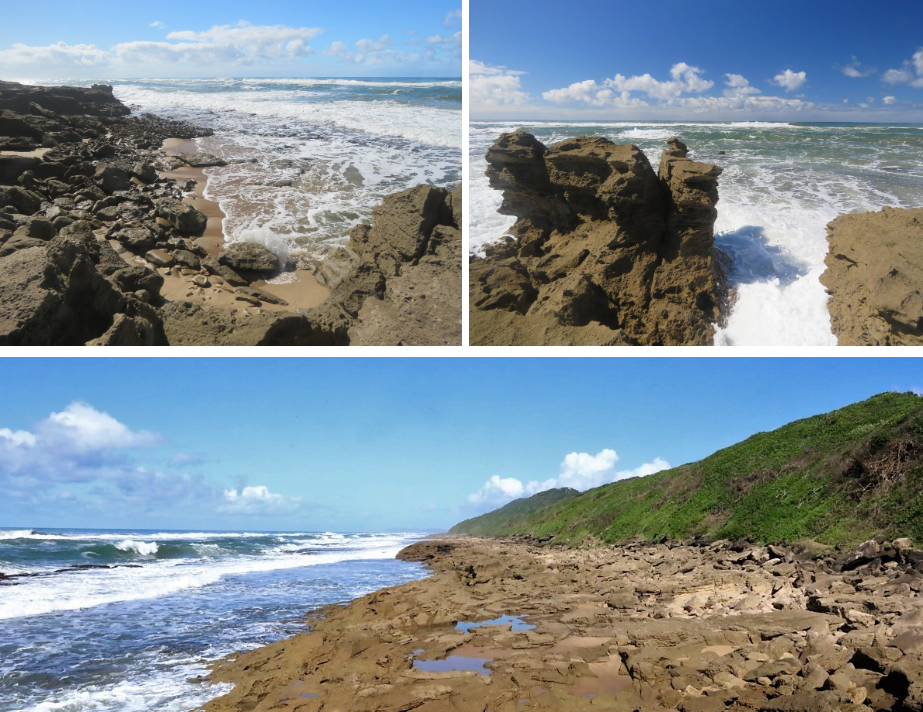
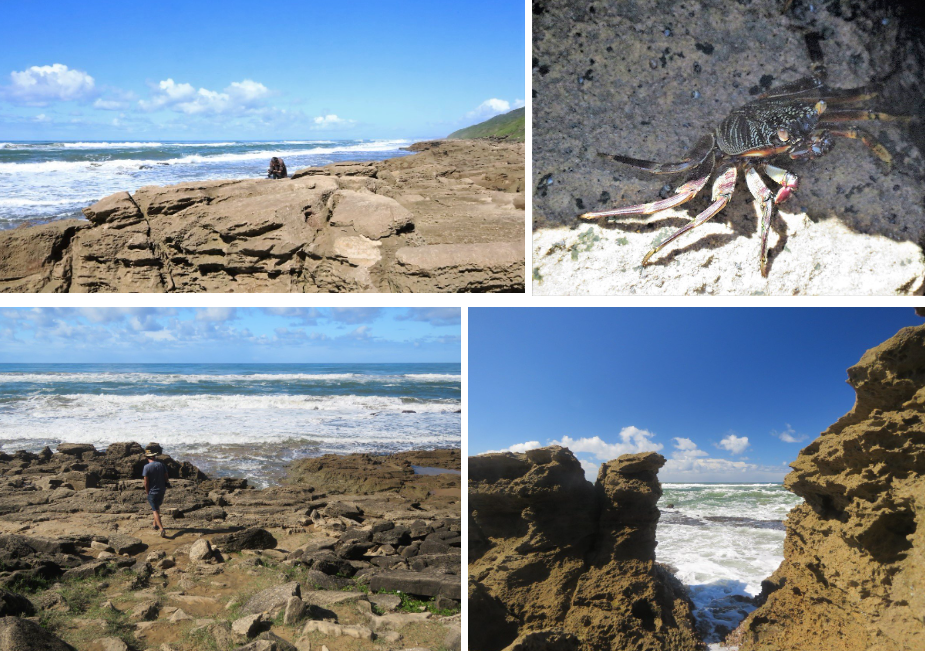
Mission Rocks was our last stop. Soon enough we exited the park, bid our farewell to Lake St Lucia and, via local craft stalls, Bob Marley inspired road stalls- which instantly transported us mentally to our children and grand children in Jamaica- and more forests, drove towards the N2 direction Durban.
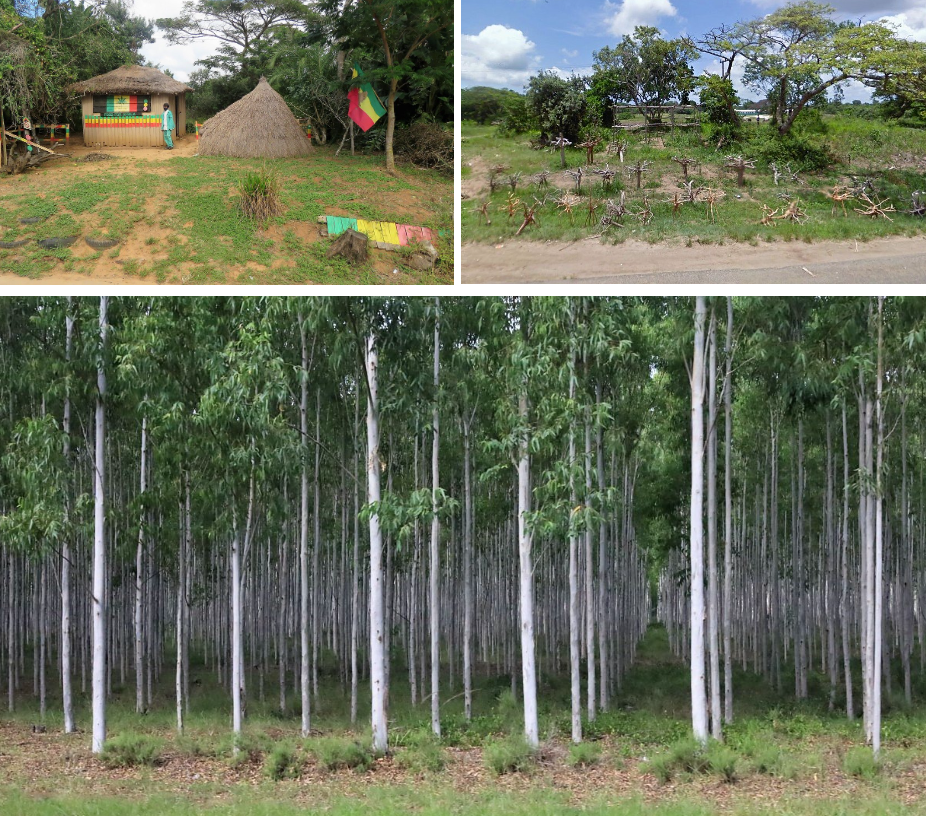
For more photos, clips and videos follow us on


KZN North Coast part 3: Lake St Lucia and Cape Vidal